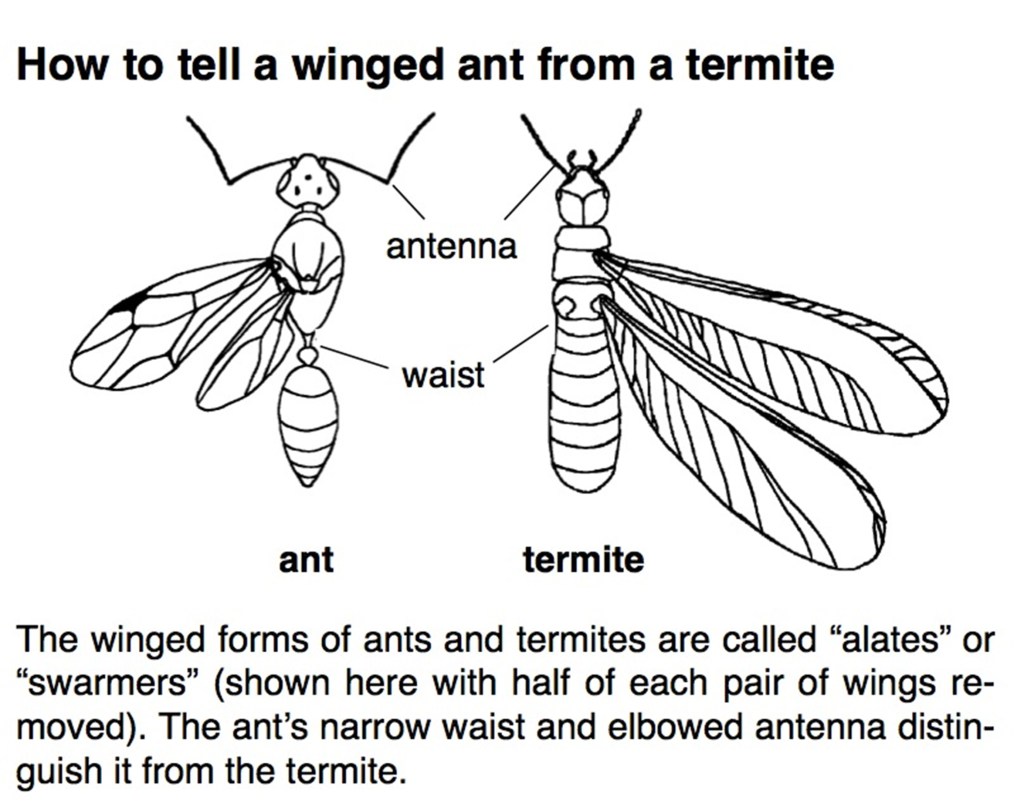THE GARDEN SPOT: Is it an ant or a termite?
Published 11:15 am Thursday, April 12, 2018

- Ant alates, left, and termite alates can be similar in appearance, but there are some distinct differences. The presence of both should be addressed by a homeowner.
Every spring as temperatures begin to rise, the calls and samples to the Extension office rise as well. One question that we always receive this time of year is, “Are these flying insects in my yard ants or termites?” It is a question that always brings a bit of anxiety for homeowners when they come.
Both termites and ants can cause issues within the home and the situation needs to be addressed, but identifying the problem is always the first step.
Trending
How can you tell if those are flying ants or termites swarming at the foundation of your house? Obviously, you don’t want either, but swarming termites bring on enhanced concern.
Whether or not the insect in question is a termite or ant, the winged versions of both are referred to as alates. Swarming occurs in both ant and termite colonies to create new colonies as future queens and kings search each other out.
In order to identify which insect you have correctly, here are a few rules for telling the difference:
• Ant alates have a thin waist (a narrow area between the thorax and first abdominal segment). The front pair of wings is larger than the hind pair, and the wings are usually clear with few veins. The antennae of an ant are elbowed.
• Termite alates have a tri-segmented body, as do all insects, but they are not as distinct as an ant. Both sets of termite wings are the same size and shape, have many veins and are opaque or milky-colored.
If the insects are ants or termites, you will see a number of winged individuals present in the mass of insects. These individuals are the unmated queens and kings of the colony that disperse to establish new insect colonies and in doing so introduce new genetics into the species.
Trending
Capture a couple of these winged individuals in the swarm, and look for the three distinctive differences (listed above) between termites and ants.
“Swarming” is a term often used by entomologists to describe the forming and departing of a mass of individuals from an insect colony. In addition to ants and termites, bees, wasps and yellow jackets may swarm.
In the area of the swarm, look for evidence of insect-damaged wood. Most ant species do not damage wood, but a few species prefer to nest in soft wood that has been damaged by water or that is in the process of breaking down or rotting. Ants do not eat wood but will chew tunnels and chambers within the wood itself, so look for signs of sawdust under the damaged wood.
Most termite species also prefer soft or water-damaged wood, but some species will infest dry, undecayed wood as well.
Unlike ants, termites will eat wood. Look for darkening or blistering of wooden structures, and look for claylike tubes or tunnels leading from the soil to the wooden structure.
If you determine that the swarm is termites or you find evidence of termite damage to any wooden structures, it is advisable to hire a pest management professional as soon as possible. If you determine the swarm is ants and you find evidence of ant damage or sawdust under any wooden structure, you may also want to hire a pest management professional.
— For information on topics related to the home and garden, contact any office of the Alabama Cooperative Extension System. The Limestone County Office is located at 1109 W. Market St. in Athens. Office hours are 8 a.m.–4:30 p.m. Monday through Friday. For more information, call 256-232-5510 or visit www.aces.edu.





